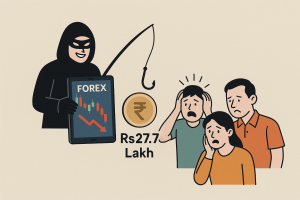Introduction
Gold continues to assert its role as a safe-haven asset and inflation hedge as we enter August 2025. Following a significant wave of dollar weakness and shifting macroeconomic signals, the gold market has started to attract investor attention once again. Amid this resurgence, traders and analysts are closely watching key technical levels and broader monetary themes that are driving price action in XAU/USD.
This article unpacks the gold market’s recent behavior using multiple professional sources. From moving average crossovers and key support zones to the inverse relationship between gold and the U.S. dollar, this comprehensive breakdown provides forex traders with a data-backed view of what’s driving the precious metal’s current trajectory—and where it could be headed next.
The Big Picture: USD Weakness Triggers Gold’s Technical Revival
Gold’s recent momentum can be largely attributed to a declining U.S. dollar index. In early August 2025, the greenback faced mounting pressure amid signs of cooling inflation and increased market expectations for the Federal Reserve to pause rate hikes. The U.S. Dollar Index (DXY), which had been trading above 105 in mid-July, has pulled back sharply, creating ideal conditions for gold to regain ground.
The inverse correlation between gold and the U.S. dollar is a well-documented relationship. As the dollar weakens, gold becomes cheaper for foreign buyers, often triggering higher demand and bullish pressure. Discovery Alert’s August 3 report confirmed this pattern, emphasizing that the current wave of gold buying is strongly tied to the perception of a softening Fed and broader concerns over long-term inflation.
Key Technical Levels: Support, Resistance, And SMA Crossovers
From a technical perspective, several signals point to a potential medium-term uptrend in gold prices. Analysts at FXStreet noted that XAU/USD recently tested and bounced from the 100-day Simple Moving Average (SMA), a historically significant technical level. While the gold price experienced resistance just above the $2,400 mark, its ability to defend the 100-day SMA shows a short-term bullish bias remains intact.
Support Zones to Watch
- $2,300: Strong psychological and historical support.
- 100-day SMA (~$2,320): Acting as an anchor in recent rebounds.
- $2,270: Next major Fibonacci retracement level.
Resistance Areas
- $2,450: Initial resistance and previous local high.
- $2,520: Multiyear resistance zone; breakout here could fuel extended rally.
- $2,600–$2,700: Medium-term target if momentum builds.
Discovery Alert’s analysis further notes that momentum indicators like the RSI and MACD have started to turn upward, suggesting building buying pressure. The MACD histogram has moved into positive territory for the first time since late June, which may lead to further technical buying if price action confirms with a close above $2,450.
Moving Averages Confirm Crossover Setup
The article from DailyForex (published August 5) highlights the growing significance of moving average dynamics. Specifically, the 20-day EMA has crossed above the 50-day EMA—a classic bullish crossover known to precede short-term rallies. This setup, often referred to as a “golden cross” on shorter timeframes, is a technical signal that tends to attract momentum traders.
When paired with weakening dollar fundamentals, this crossover becomes even more significant. Gold’s alignment above its short- and medium-term moving averages suggests that the path of least resistance could be to the upside.
Macroeconomic Factors Amplifying Bullish Gold Sentiment
While technicals are important, macroeconomic context provides the fundamental fuel for any lasting gold rally. As of early August 2025, several forces are converging to create an accommodative backdrop for precious metals:
1. Fed Policy Outlook Turning Dovish
Traders are increasingly pricing in a Federal Reserve pause—or even potential rate cuts—by the end of Q4 2025. Weaker inflation data, alongside slowing wage growth, has reduced pressure on the central bank to continue tightening. Lower interest rates generally reduce opportunity cost for holding non-yielding assets like gold, thereby increasing demand.
2. Persistent Inflation Concerns
Despite cooling CPI figures, investors remain skeptical about inflation’s trajectory in the medium term. Geopolitical risks, global energy volatility, and debt accumulation are all cited as risks to price stability. As a traditional hedge against inflation, gold stands to benefit from these lingering uncertainties.
3. Global Market Volatility and Geopolitical Tension
Safe-haven demand continues to rise due to elevated market volatility and tension in international markets. From trade conflicts to regional instability in the Middle East, risk-off sentiment is driving capital flows into traditional safety assets, especially gold.
Inverse Correlation With USD: A Reinforced Relationship
The relationship between gold and the U.S. dollar has strengthened in 2025. According to the Discovery Alert report, the current environment has led to one of the most statistically reliable inverse correlations between the two assets in recent years.
Why Does It Matters?
- A falling dollar improves gold’s purchasing power globally.
- It amplifies returns for non-USD investors.
- Acts as a leading indicator for gold surges in risk-off environments.
Recent chart overlays show the dollar’s dip from 105.2 to 102.8 has coincided with a gold price jump from $2,300 to over $2,430 in less than 10 days. Such correlation strength hasn’t been observed since Q3 2022.
Sentiment Indicators: Commitment Of Traders (COT) And ETF Flows
Professional traders have also begun to reposition in favor of gold, according to the latest Commitment of Traders (COT) report. Net long positions in gold futures increased for the third straight week in late July, indicating growing speculative confidence.
Additionally, gold-backed exchange-traded funds (ETFs) have witnessed fresh inflows, reversing months of decline. This uptick, albeit moderate, reflects renewed investor interest in gold as a strategic portfolio hedge amid bond market volatility.
Short-Term Trading Strategy Suggestions
For retail traders and strategy-focused investors, the current technical picture opens up several potential setups:
Swing Trading Setup
Entry: On dips toward $2,310–$2,320.
Stop Loss: Below $2,270.
Target: $2,450 and $2,500 in the next 10 sessions.
Breakout Trade (Momentum Setup)
Trigger: Break above $2,450 with strong volume.
Confirmation: RSI > 60 and MACD divergence.
Target Range: $2,580–$2,620.
Traders should remain alert to macroeconomic headlines such as U.S. CPI releases, Fed commentary, and bond yield movements, which could invalidate or accelerate these setups.
What Could Reverse The Gold Rally?
While current sentiment is bullish, traders must remain cautious of headwinds that could challenge the upside scenario:
- Stronger-than-expected U.S. jobs or CPI data.
- Hawkish surprises from the Federal Reserve.
- Sharp rebound in DXY and real yields.
- Profit-taking after a sharp price climb.
These events may cause gold to retest support at the 100-day SMA or even fall back toward the $2,270 area if risk sentiment improves quickly.
Conclusion
The gold market in August 2025 presents a compelling opportunity for bullish traders and long-term holders alike. A confluence of technical strength, macroeconomic catalysts, and sentiment shifts is pushing the precious metal higher. With the U.S. dollar on the back foot and central banks worldwide inching toward looser policy, gold is likely to retain upward pressure in the near term.
However, traders should monitor resistance levels and remain agile in adjusting their strategy to evolving fundamentals. Whether as a hedge, a speculative trade, or a macro play, gold is back in focus—and this time, the charts and fundamentals may be more aligned than they’ve been in years.


